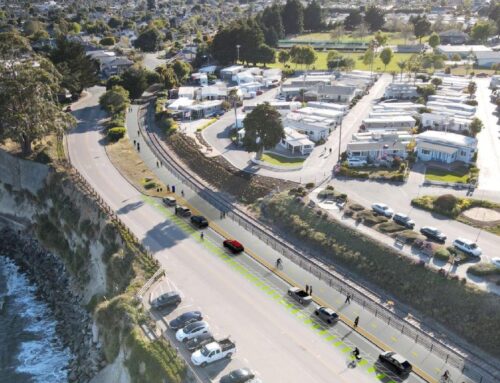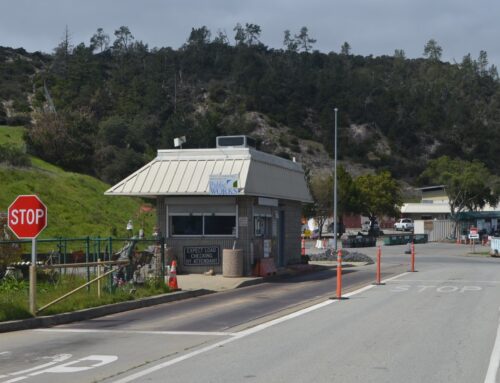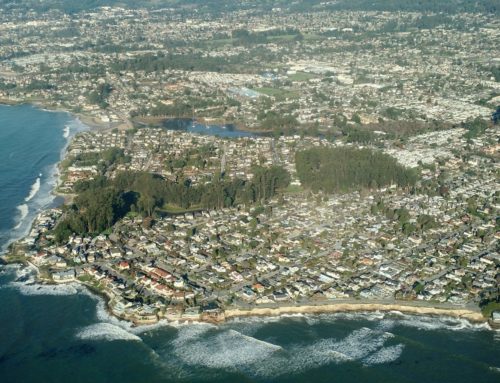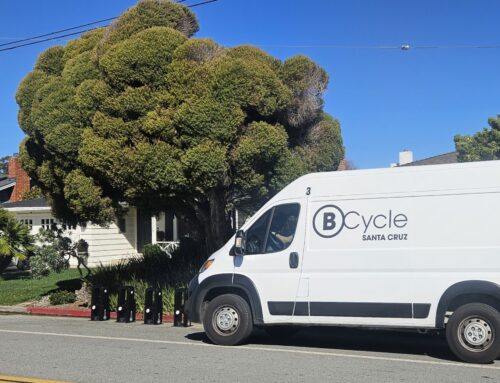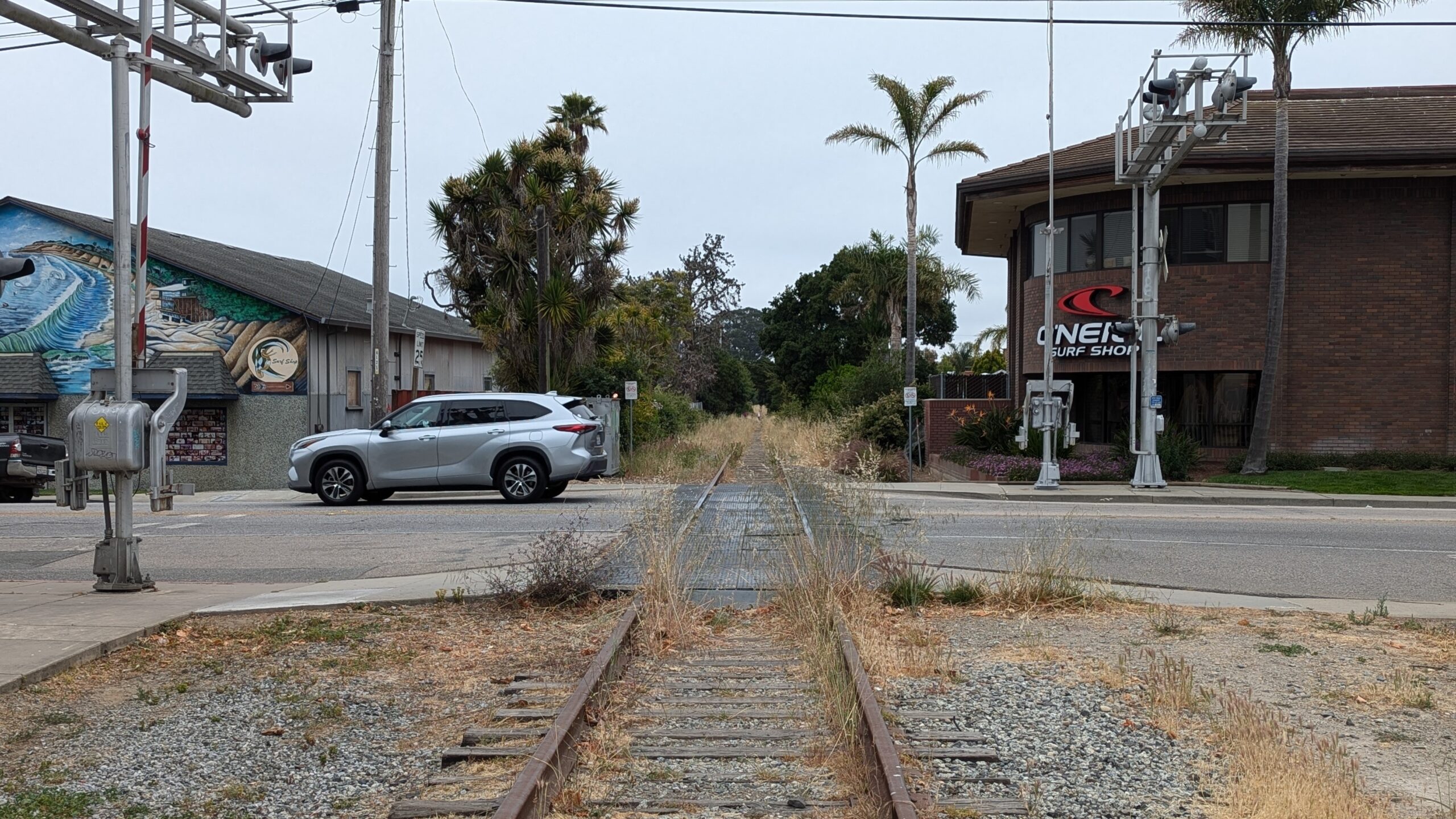
A draft route of the rail trail would divert onto streets between Live Oak and Capitola because of a narrow stretch of the rail corridor. The rail line is pictured here at 41st Avenue. (Stephen Baxter — Santa Cruz Local)
LIVE OAK >> Santa Cruz County’s rail trail could divert from the train tracks onto neighboring streets to bypass narrow stretches of the rail corridor and wetlands, according to a draft route released this month.
The path could split from the rail line between 38th Avenue in Live Oak and 47th Avenue in Capitola, and in South County near San Andreas and Buena Vista Road.
Santa Cruz County Regional Transportation Commission staff want input on the proposed route and potential rail vehicles. Learn more about the plan and give feedback on the transportation commission’s website and at two open houses:
- 6-7:30 p.m. Monday, June 24 at Civic Plaza Community Room, 275 Main St., Watsonville.
- 6-7:30 p.m. Tuesday, June 25 at Live Oak Grange, 1900 17th Ave., Live Oak.
Jump to a section:
- What is the draft rail-trail route?
- What’s the plan for narrower parts of the corridor?
- Where could the rail trail leave the rail corridor?
- What kind of rail vehicles could be used?
- What are the next steps?
What is the draft rail-trail route?
The regional transportation commission in June released a first look at how passenger rail service and a paved path could wind through 22 miles of rail corridor from Santa Cruz to Watsonville. Commission staff want residents’ feedback before they release a more detailed plan in the fall.
- Initial designs for the corridor include a pedestrian and bike path alongside the rail line.
- The trail may need to be diverted from the rail corridor in at least two places. Bridges are not considered in this draft.
- Recently constructed parts of the rail trail also may require some reconstruction to accommodate passenger rail service.
The June draft alignment marks the path the rail and trail could take. A more detailed alignment to be released by the end of 2024 is set to include potential train stations, bridges and other features.
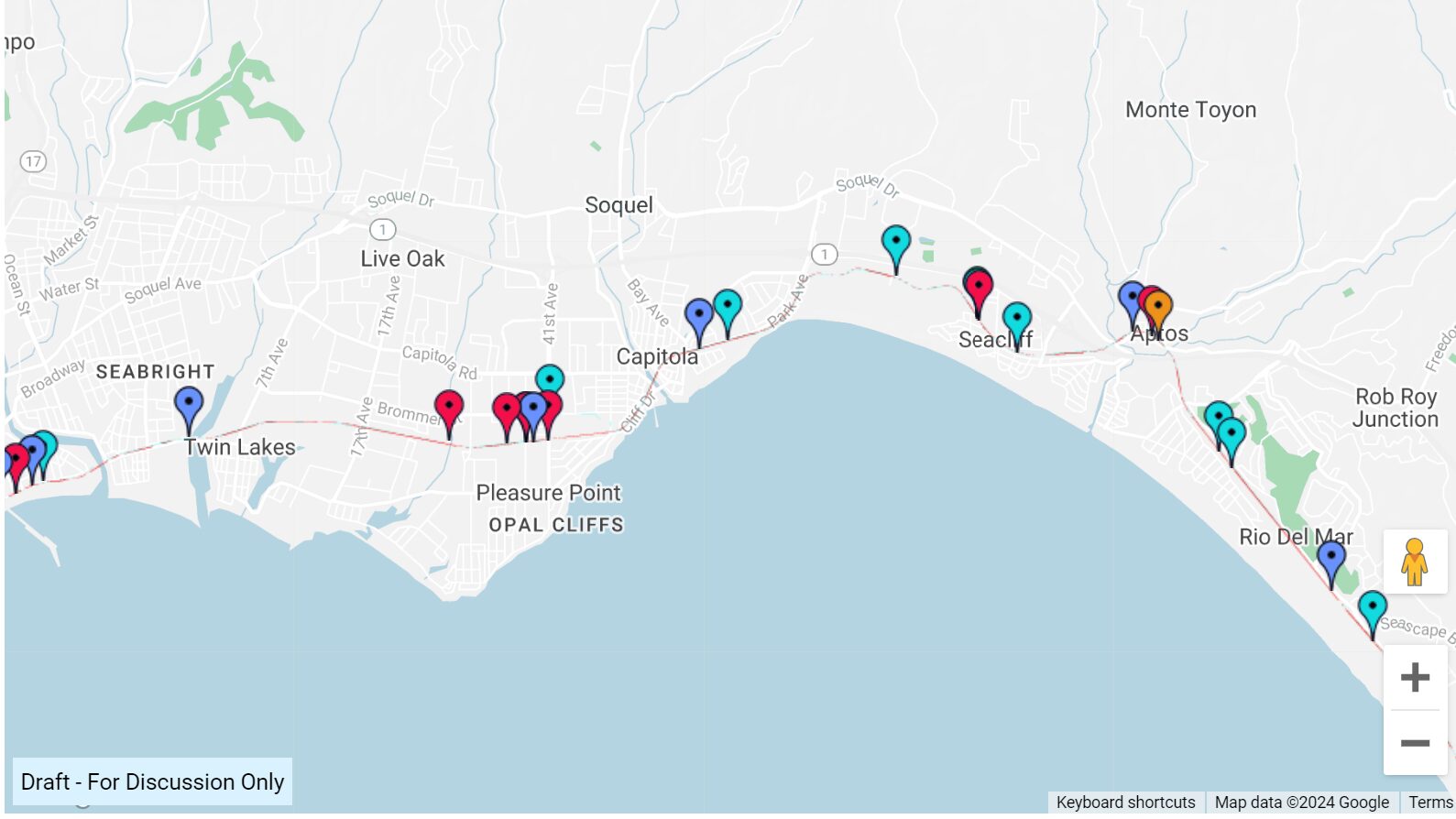
Users can pin comments on an “initial conceptual alignment” of the rail trail. (Santa Cruz County Regional Transportation Commission)
Visitors to the alignment website can comment about a point along the rail and trail paths. To comment, select “initial conceptual alignment” in the left menu, scroll down to the map, and click “add comment.”
What’s the plan for narrower parts of the corridor?
In some places, passenger rail service and a paved path may not fit side-by-side. In these areas, the commission could buy more right-of-way to widen the corridor, or route the trail away from the rail.
That’s based on the rail trail’s cross-section design, which includes the size of the trail, its distance from the rail, and the rail’s distance from the edge of the corridor.
In May, the transportation commission agreed on preliminary designs for the rail trail’s cross section, with a 12 foot-wide trail 12 feet away from the center of the tracks. That’s on par with clearances for a rail and trail project in northern San Diego County.
In tighter parts of the Santa Cruz County corridor, the trail could be slightly closer to the tracks — but in some places, even that wouldn’t fit.
The setbacks are based on state and federal regulations. But those rules differ based on the type of train and other factors. “We took the most conservative setback, or horizontal clearance requirement, that we believe would realistically have as a need,” said Sarah Christensen, transportation commission senior transportation engineer.
Parts of the trail recently built in Santa Cruz and Watsonville may be too close to the rail and may need to be partially repaved, Christensen added. That’s because those designs considered occasional freight trains, not frequent passenger rail. While passenger rail has been under consideration for years, it “wasn’t considered an approved project,” she said. “You design and build your project according to the current use.”
To some, the potential trail relocation signals poor planning. “You’re building a trail designed for a train, but you don’t even know the train you’re going to have,” said Brian Peoples, executive director of Trail Now, during a June 6 regional transportation commission meeting.
Likewise, public consideration of a rail path or a vehicle is premature, Peoples said. “Plain and simple, this isn’t the way you design a system,” he said.
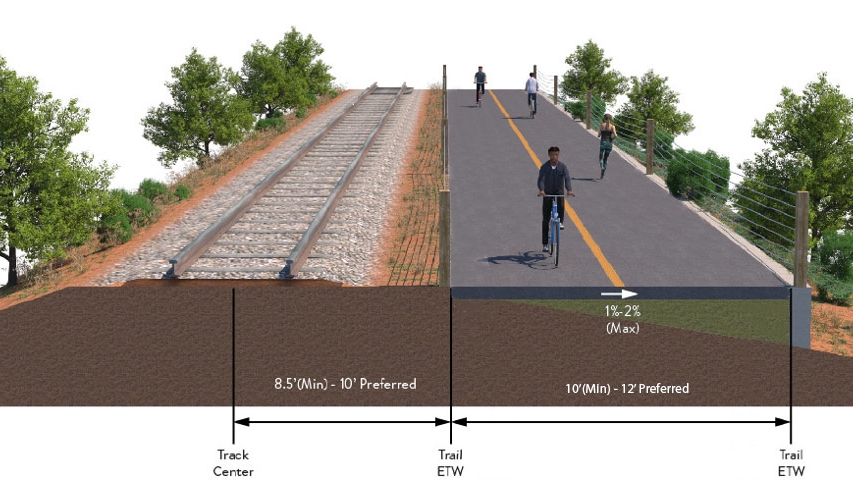
Regional Transportation Commission staff in 2022 described rail-trail widths that could vary based on rail vehicles and other factors. (Santa Cruz County Regional Transportation Commission)
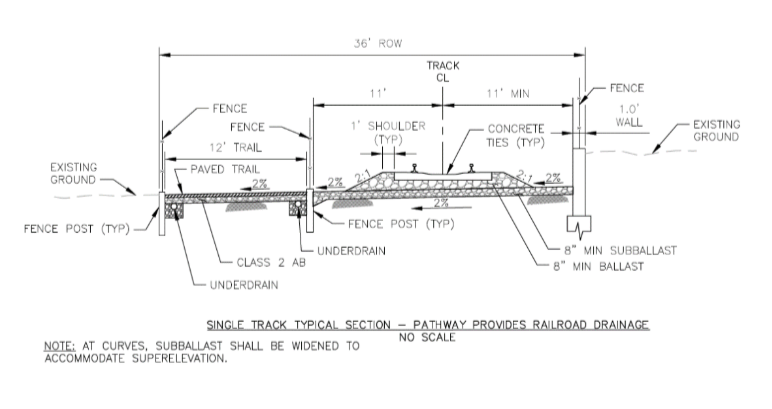
Widths approved in May 2024 were at least 11 feet from the rail center line and 12 feet across the paved path. (Santa Cruz County Regional Transportation Commission)
Where could the rail trail leave the rail corridor?
The draft alignment diverts from the rail corridor at 38th Avenue in Live Oak to Brommer Street. The path would continue on Brommer across 41st Avenue to Jade Street, through Jade Street Park, and on to 47th Avenue in Capitola.
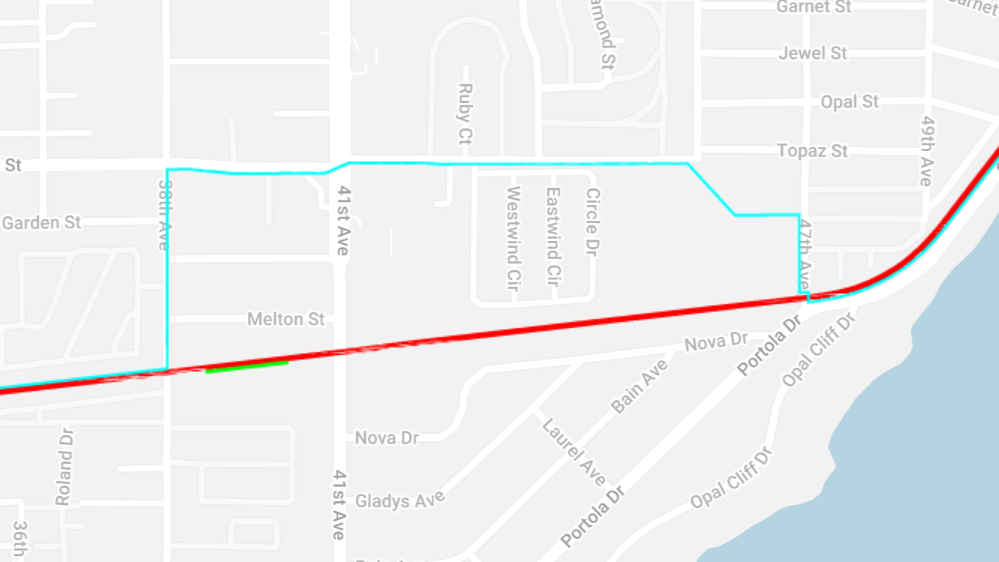
The red line shows the rail corridor. The blue line shows a proposed section where the path would be diverted onto streets across the Live Oak-Capitola border at 41st Avenue. (Santa Cruz County Regional Transportation Commission)

A relatively narrow rail corridor from 38th Avenue to 41st Avenue in Live Oak could prompt the rail trail to divert to Brommer Street. (Stephen Baxter — Santa Cruz Local)
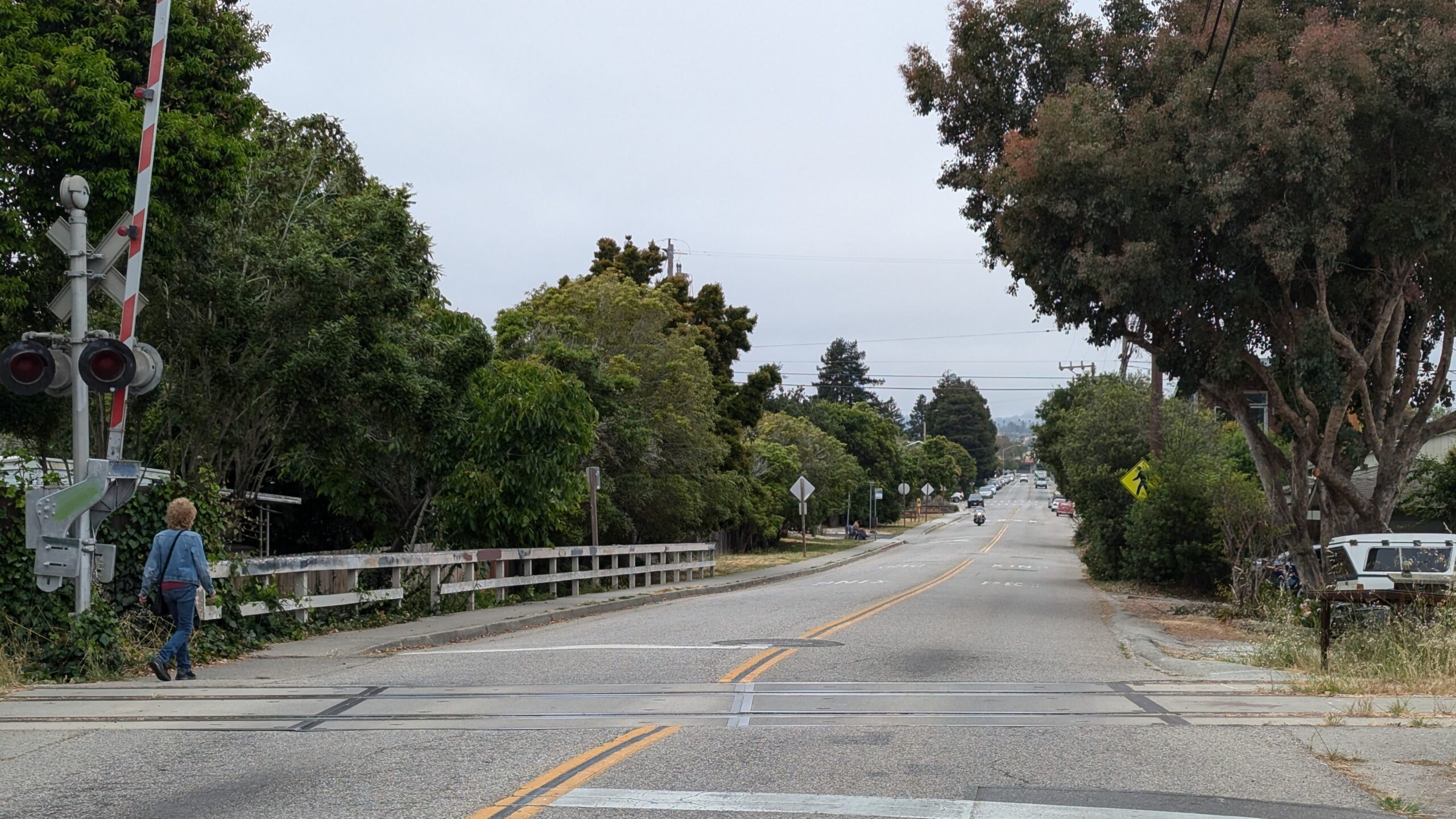
A proposed route of the rail-trail could divert the path off the railroad tracks at 38th Avenue because of a narrow stretch of rail corridor. (Stephen Baxter — Santa Cruz Local)
In South County, the proposed rail trail would split at San Andreas and Buena Vista roads. The path would be separate from the passenger rail line for about three miles to skirt slough crossings and small spurs of rail off the main track used by freight trains. The trail would turn along Watsonville Slough to rejoin the rail corridor.
More complete plans may include more areas where the trail leaves the corridor, including around bridges. In May, the regional transportation commission voted to rebuild bridges to bear the weight of heavier vehicles like freight trains. The commission hasn’t decided on designs for the replacement bridges, or whether any could include a trail.
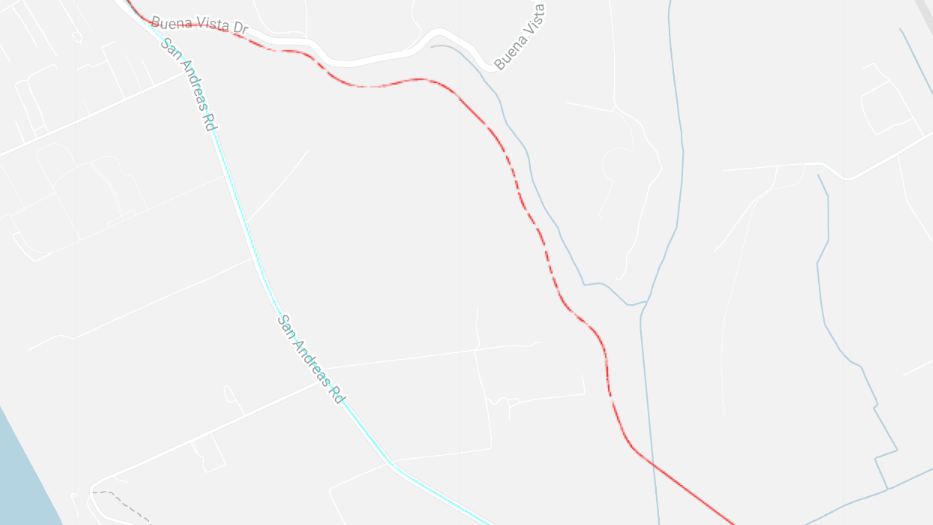
The paved path of the rail trail could divert from the rail line at San Andreas and Buena Vista roads. The blue line shows the path and the red line shows the rail corridor. (Santa Cruz County Regional Transportation Commission)
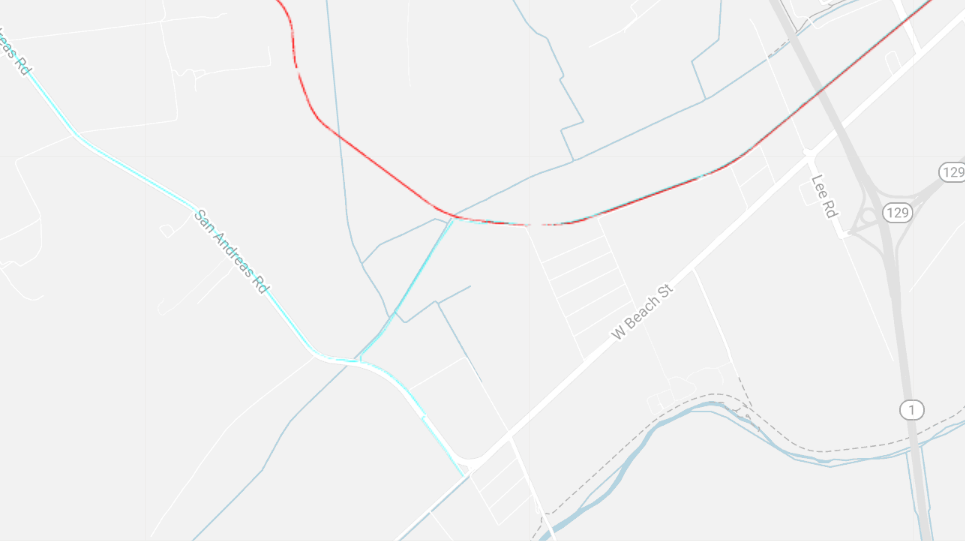
The blue line shows the path and the red line shows the rail corridor. The diverted trail on San Andres Road would run along Watsonville Slough to rejoin the corridor. Another path would connect the trail to West Beach Street. (Santa Cruz County Regional Transportation Commission)
In some places, transportation commission staff may consider bypassing bridges by routing the trail outside the corridor. For example, the trail in part of Aptos and Seascape could bypass bridges and avoid building costly pedestrian bridges by shifting to the adjacent Sumner Avenue, Christensen said.
What kind of rail vehicles could be used?
The transportation commission won’t need to choose a vehicle until later in the planning process, Christensen said. This summer, staff want feedback on three options for the rail: light rail, locomotive-hauled trains, and multiple unit trains.
Light rail is a lighter vehicle that usually runs shorter distances, such as the Santa Clara Valley Transportation Authority rail in Silicon Valley.
- Light rail isn’t compatible with other types of vehicles anticipated to run on California’s state rail system. That could make the project ineligible for many state or federal grants, and mean local governments would bear more of the cost.
- Most light rail is powered by costly overhead wires. Battery-powered light rail runs less than 10 miles, Christensen said.
Locomotive-hauled trains, such as Amtrak trains, are driven by a vehicle separate from the passenger cabs.
- Rail cars can be added or removed as needed.
- Locomotives take longer to speed up and slow down for station stops, which could lengthen commute times.
- Most locomotives are diesel-powered. Some Amtrak trains in the Northeast U.S. are electric.
Multiple-unit trains are heavier than light rail vehicles but lighter than locomotive-hauled trains.
- Zero-emission multiple-unit trains are hard to come by, but they’re becoming more common. This year, the San Bernardino County Transit Authority is set to start running a battery- and hydrogen-powered multiple-unit train. Christensen said she expects the technology to develop over the next 10 years.
- Rail cars can’t easily be added or removed based on demand.
- The trains can run up to 100 mph, but a vehicle on the Santa Cruz line would only go up to 60 mph, according to a transportation commission staff report.
Although a wide variety of rail vehicles exist, transportation commission staff said they are limited to those approved by the California Public Utilities Commission.
What are the next steps?
The draft path is the latest step towards a conceptual report for the rail expected in 2025.
- In the fall, transportation commission staff expect to release a more detailed version of the June draft alignment, plus potential station and facility locations.
- A draft version of the conceptual report with preliminary cost estimates is expected in early 2025.
- After the report is released, the transportation commission could vote to pursue environmental review of the project.
What do you think?
Your questions and comments will inform our future coverage.
Other questions, comments or news tips? Email [email protected].
Jesse Kathan is a staff reporter for Santa Cruz Local through the California Local News Fellowship. They hold a master's degree in science communications from UC Santa Cruz.


